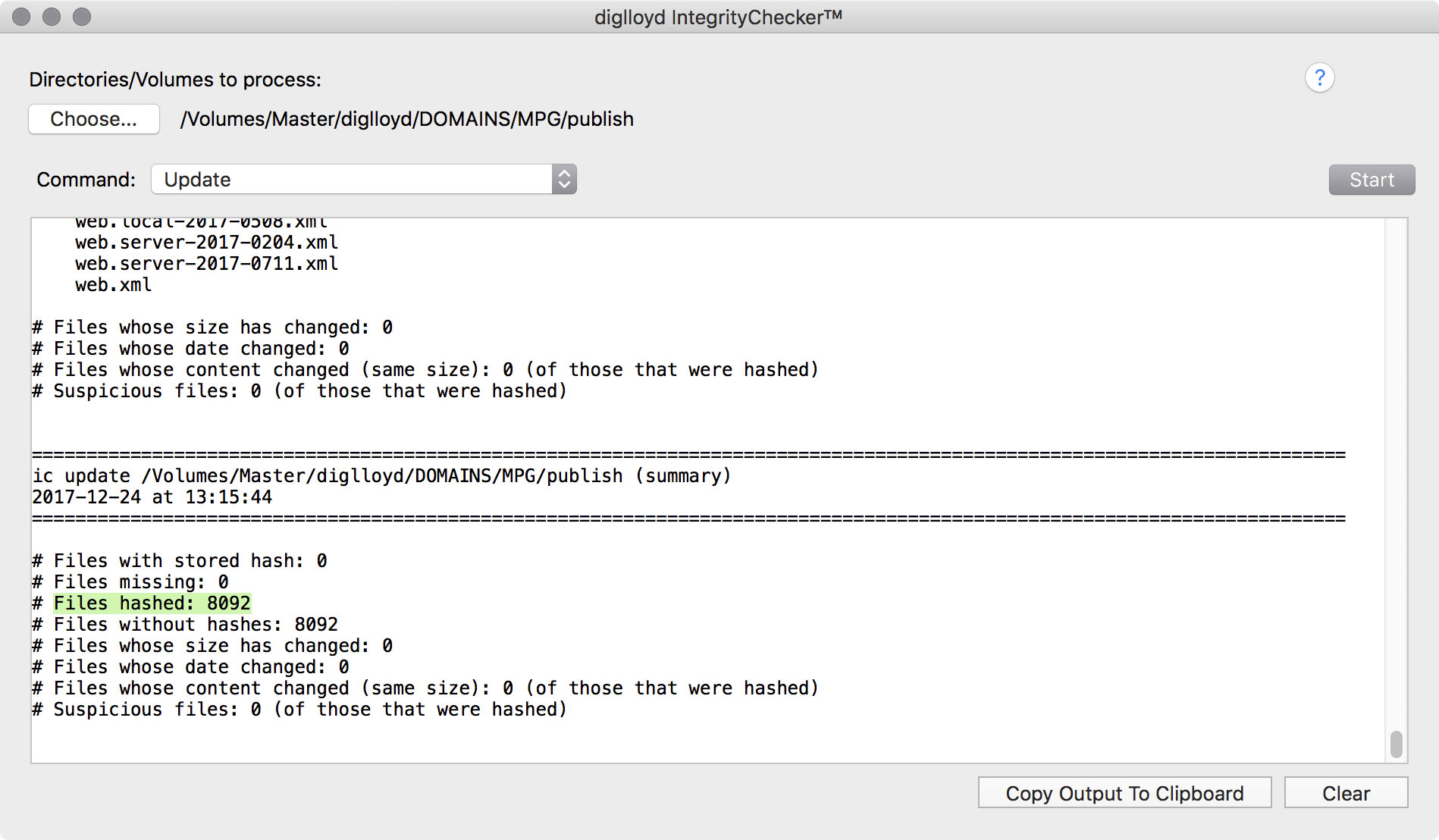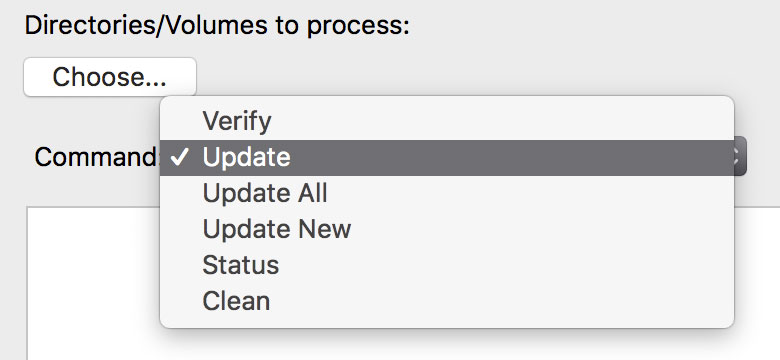update, update-all, update-new
The native version of IntegrityChecker is officially deprecated. Please transition to IntegrityChecker java version (icj).
The update and update-all and update-new command all update the validation files. The only difference is which files are processed.
In most cases, the update command is the best choice, but it can be useful to force an update of all files, or to update only new files.
- The update command creates validation info for files that are new (don’t have validation data), files that have changed size, or files that have changed creation or modification date.
- The update-new command creates validation info for all files that don’t have validation data. This is useful mainly so that you can verify all files as a group, flagging those that have changed for any reason (contents, date, size).
- The update-all command creates validation info for all files from scratch, regardless of whether or not there is existing validation info. Any changes for existing files are noted during the process.
You can update a single volume or a single folder with the GUI, or an unrestricted number of volumes or folders using the command line.
Running IntegrityChecker update / update-all / update-new
Using IntegrityChecker.app, choose volumes or folders. Then choose or or .
A file listing and summary information is presented.

Command line usage
It is recommended to leave the options alone. In nearly every case, the defaults provide the best performance.
update | update-new | update [--progress-interval|-p <seconds>] "1" [--buffer-size|-b <kilobytes>] "2048K" --buffers|-n <count>] "4" --threads|-t <count>] "4" <path>[ <path>]*
Updates validation info for volume “Master”:
ic update Master
Updates validation info on volumes Master, Backup1 and Backup2:
ic update Master
Backup1
Backup2
Updates validation info for files lacking it on volumes “Master” and “Backup1” and “Backup2”:
ic update-new Master
Backup1
Backup2
Copyright © 2008-2010 diglloyd Inc, all rights reserved
